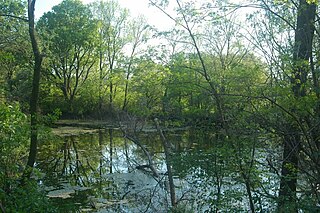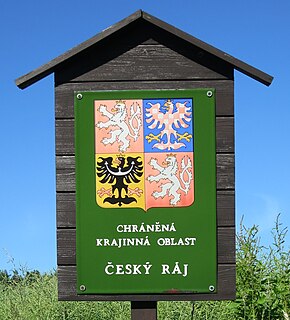 W
WA landscape park is a type of protected area in Czech Republic, Poland, Slovakia, Ukraine, Hungary and Slovenia. It is of lower status than a National Park and with less stringent restrictions on development and economic use.
 W
WBeskydy Protected Landscape Area (PLA) is the largest PLA in the Czech Republic. The area is 1,160 km2 (448 sq mi). It lies in the south-eastern part of the Moravian Silesian and eastern part of Zlín regions, on the border with Slovakia. All its area belongs to the Outer Western Carpathians and comprises most of the Moravian-Silesian Beskids Range, a large part of the Vsetínské vrchy Range, and the Moravian part of the Javorníky Range. In Slovakia, Kysuce Protected Landscape Area borders the area.
 W
WBohemian Paradise is a Protected Landscape Area and a region in Bohemia in the Czech Republic. It was declared in 1955, as the first nature reserve in Czechia. At first, it was 95 square kilometres in area; today it is almost 182 km². This area is in the north of Bohemia and north-eastward from the capital city Prague. Borders of the region are not clearly defined, but there are some towns which could demarcate rough borders, for example, Turnov, Jičín and Mnichovo Hradiště.
 W
WThe Broumovsko Protected Landscape Area is a protected landscape area in north-east Bohemia in the Czech Republic, on the border with Silesia. It is named after the town of Broumov. The highest point is Čáp with its 785 m a.s.l.
 W
WČeský les Protected Landscape Area is a Protected Landscape Area in the Czech Republic. It lies in the western part of the Pilsen Region along the border with the German state of Bavaria. It protects the most valuable parts of the range of the same name, the Český les, which bears the name Oberpfälzer Wald in Germany.
 W
WKřivoklátsko Protected Landscape Area is a Landscape Protected Area in the Czech Republic. It lies in the western part of the Central Bohemian Region and a small part of the north-eastern Pilsen Region. Most of the area belongs to the highlands of the Křivoklátská vrchovina and lies on both banks of the Berounka river.
 W
WLitovelské Pomoraví is a 96 km2 (37 sq mi) protected landscape area established on 15 November 1990, in the floodplain of the Morava River, north of Olomouc, in the Czech Republic. In the centre of the area lies the ancient city of Litovel, nicknamed "Venice of Hanakia", from which the protected area has derived its name.
 W
WThe Pálava Protected Landscape Area is a protected landscape area and a UNESCO biosphere reserve located in Moravia in the Czech Republic, on the border with Austria. The highest point is Děvín with its 549 m a.s.l. This unique area was originally recognized by UNESCO in 1986 and expanded in 2003 to include another UNESCO site, the Lednice–Valtice Cultural Landscape. CHKO Pálava is dominated by the limestone Pálava Hills, and contains a significant proportion of natural or little affected steppe ecosystems that include meadow steppe, forest steppe, and thermophilic oak forest. In the floodplain of the river Thaya, forests alternate with meadows and wetland habitat that also include halophytic vegetation. The remaining part of CHKO Pálava is used agriculturally, with many sustainably farmed vineyards that are a part of the wine subregion Mikulovská. CHKO Pálava contains well-preserved monuments of historical significance, such as the Paleolithic site in Dolní Věstonice where the Venus of Dolní Věstonice, a ceramic Venus figurine dating to 29,000–25,000 BCE, was discovered. Mikulov, a town founded in the Middle Ages, is located in the southernmost part of CHKO Pálava, and contains buildings of historical and architectural significance, such as Mikulov Castle.